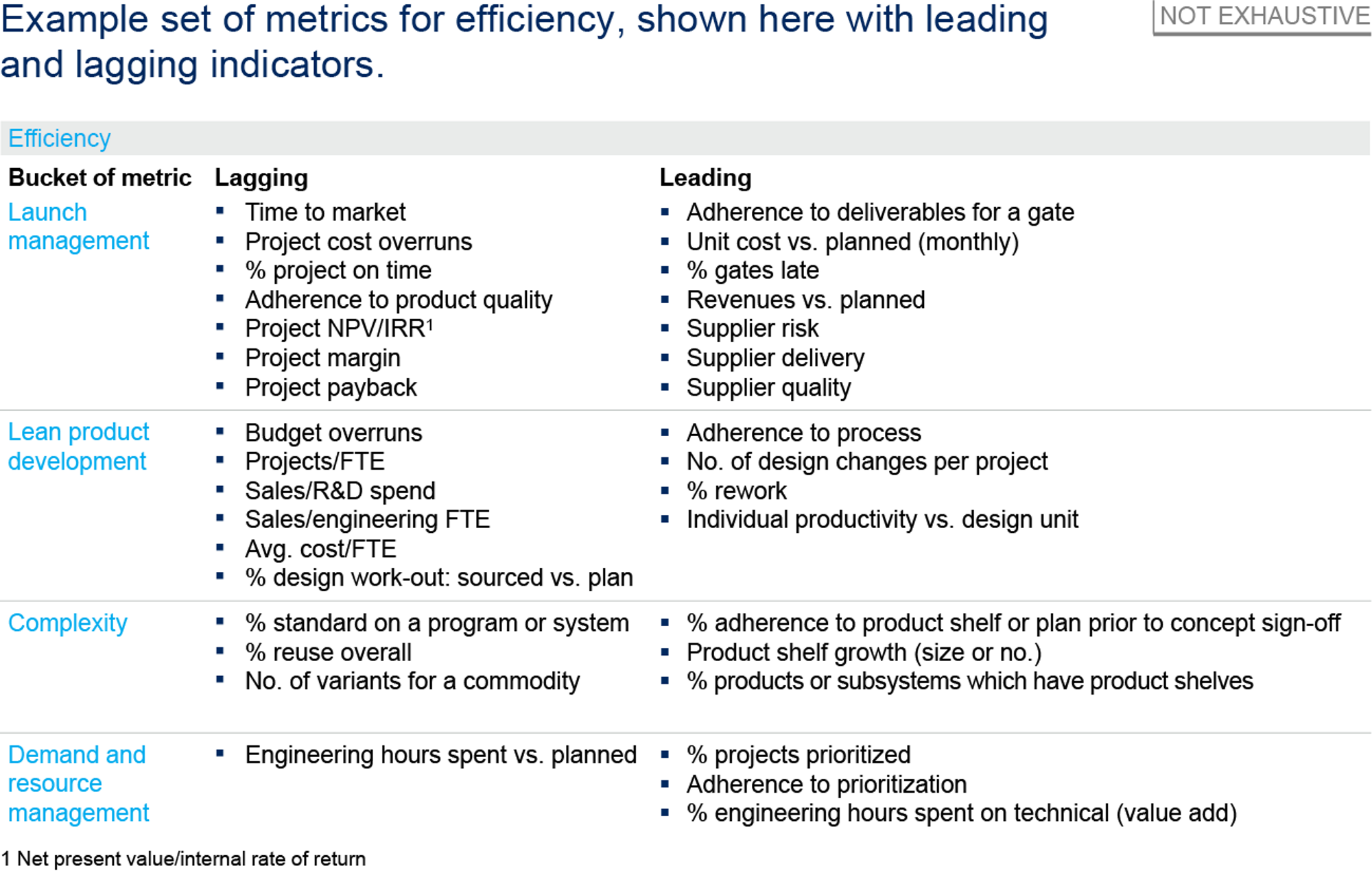Boost your R&D productivity by monitoring the right data.
Leading indicators help to ensure that employees perform proactively, while lagging indicators identify issues with adherence.
While one robust formula is helpful to understand engineering productivity, there are a number of additional leading and lagging indicators that help companies to delve deeper, so that they can measure both efficiency and effectiveness within the product development organization and process (Exhibit 1).

Leading indicators are forward looking and critical to ensure that employees perform proactively, for example, identifying risks early on and initiating countermeasures instead of reacting after the risk has materialized. Lagging indicators represent metrics to assess the development work that has already been conducted. Development metrics fall into two categories: functional (tied to product development budgets) and project based (tied to project profits and losses directly). Both are important for measuring performance but take different cuts of the data. Exhibits 2 and 3 present a set of sample metrics for leading and lagging indicators for efficiency and effectiveness. Although these metrics are neither exhaustive nor universally accepted, they help to illustrate the types of leading and lagging indicators available.


There are several best practices for selecting metrics and setting targets. First, companies need to avoid the common trap of selecting too many or redundant metrics. At any given level, three to eight metrics (key performance indicators) should be used for performance management. Deep-dive submetrics (internal performance indicators) can be used, as needed, to reveal the causes of issues. Metrics should be SMART: simple, measurable, actionable, relevant, and timely. Common pitfalls include promoting a reactive culture by using too many lagging indicators or establishing metrics that do not align with the responsibilities or controls within a group or that fall outside of the company's core strategic objectives. It is also important to consider data availability when choosing metrics. Data reliability and ease of capture will determine the cost of monitoring and effectiveness. Mapping the sources and process for data capture (for example, method, frequency, or communication) will provide insight into feasibility.
This article was originally published in Development Excellence: The engine to drive product success (McKinsey & Co., 2016).
Kimberly Borden is a partner in McKinsey's Chicago office, Russell Hensley is a partner and Patrick Hertzke is an associate partner in the Detroit office.